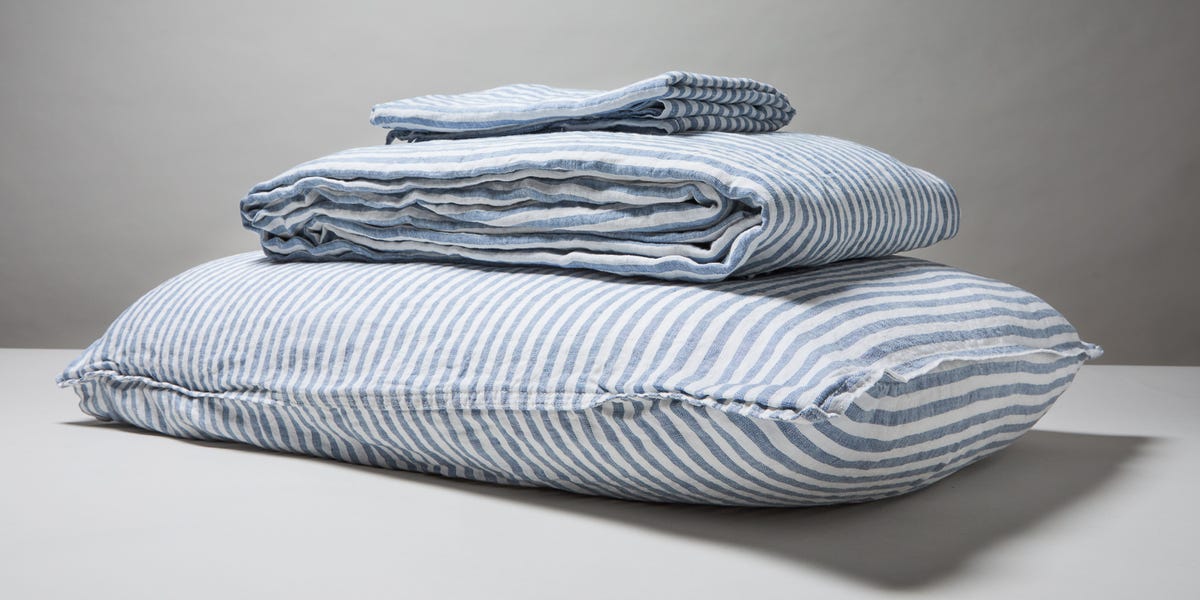Spring is an exciting time of year for many reasons. The bitter chill of winter is coming to an end, and summer’s glow is within reach—everything just feels fresh. Yes, January and the new year are mental palette cleansers, too, but spring hits differently. In January, you’re simply trying to survive and stay warm. By the time the first flowers bloom, you’re ready to spruce up your life in a realistic way. That’s when spring cleaning enters the chat.
A bold, intentional springtime home organization project is a seasonal step forward. If you spent the first three months of 2025 (understandably) hibernating, now’s the time for a new start, and that begins with your space. All that talk about an organized home being good for your mental health is actually true. When our space is decluttered, our minds can follow. Pulling from studies by Princeton University (among others), Verywell Mind reports that home clutter may be linked to feelings of depression and anxiety. So if you find yourself approaching the change of seasons in a bit of a fog, consider organizing your home as a first step to clearing the air.
These six organizing methods, below, will help you do just that:
The KonMari Method
Coined by author Marie Kondo and popularized on her Netflix series Tidying Up, the KonMari method has a simple but effective philosophy: Only keep things in your home that spark joy. To follow this approach, you’ll organize by categories (clothes, sentimental items, paperwork, etc.) instead of actual rooms. As you sift through your items, ask yourself, “Does this speak to my heart?” If it does, keep it. If not, thank the item for what it gave you, then set it free. “Life truly begins only after you have put your house in order,” Kondo says. Using her method, everything in your home should invoke some feeling of love. If that’s not the most beautiful way to live your life, then what is?
The “Ski Slope” Method
Former therapist (now interior designer) Anita Yokota came up with the “Ski Slope” Method, which you can read more about in her book, Home Therapy. Unlike Kondo’s philosophy, the “Ski Slope” Method does require you to clean room by room, approaching each one like, you guessed it, a ski slope. The thought of tackling a giant, cluttered room is sort of like skiing a black diamond. It’s a tall order, and you may not see the best way through. But the “Ski Slope” Method encourages you to navigate the room corner to corner, slowly making your way to the opposite end. Before you know it, the room is clean. You successfully skied the entire run!
“The idea is to imagine your messy room like a ski slope,” Yokota writes in her book, according to Good Housekeeping. “If you try to go straight down, the steep angle feels scary and overwhelming. But if you traverse the slope, skiing from one side to the other, you lessen the angle and make it down the mountain without even noticing.”
The One-Touch Rule
Productivity Consultant Ann Gomez created the One-Touch Rule for home organization, and the concept is simple: Start and finish tasks all in “one touch.” By this, Gomez means avoid stopping chores halfway through because you’ll “get to it later.” Her philosophy is particularly effective for everyday upkeep. If you’re sifting through a large stack of unopened mail, for example, it may be tempting to only go through half, then do the rest in a few hours—but that would be two “touches.” Instead, comb through the entire pile in one “touch” so you can fully cross the task off your list. Ideally, this will keep the little things from piling up and make your larger spring cleaning mission infinitely easier.
The Four-Box Method
This is perhaps the most straightforward organizing philosophy out there—and one of the most used. It requires exactly what the name suggests: four boxes, each labeled a category to help make sense of the junk in your home. “Keep,” “sell,” “donate,” and “throw away” are some of the more popular groupings for this method. As you go room to room, examine items and try to put them in one of the four boxes. When you’re done, you’ll know exactly what’s staying under your roof and what’s getting the boot. “Undecided” and “storage” are also some box categories people use in this method, but be warned: You may put items in these buckets to avoid actually deciding what to do with them. (This will just keep your space cluttered!) Because the Four-Box Method is open-ended in terms of deciding which items to put in certain boxes, only use it if you’re prepared to be incredibly decisive.
The 30-Day Minimalism Game
Started by authors Joshua Fields Millburn and Ryan Nicodemus (a.k.a “The Minimalists”), this “game” is extreme but effective—especially for basements, attics, and other spaces where your junk has filled up. Essentially, on each day of the month you’ll get rid of a certain number of items in your home. The number is dependent on the day itself. For the first day of the month, you’ll purge one item (maybe something big, like the broken vacuum collecting dust in your closet). On the second day, you’ll throw away two things, and so on. Yes, this means on the 27th of the month, you’ll be tossing 27 items, but they can be small. (We all have that one bottomless-pit drawer stuffed with old batteries, chargers, random papers, and wires. Maybe save that for the last day of the challenge!)
Read the full article here








